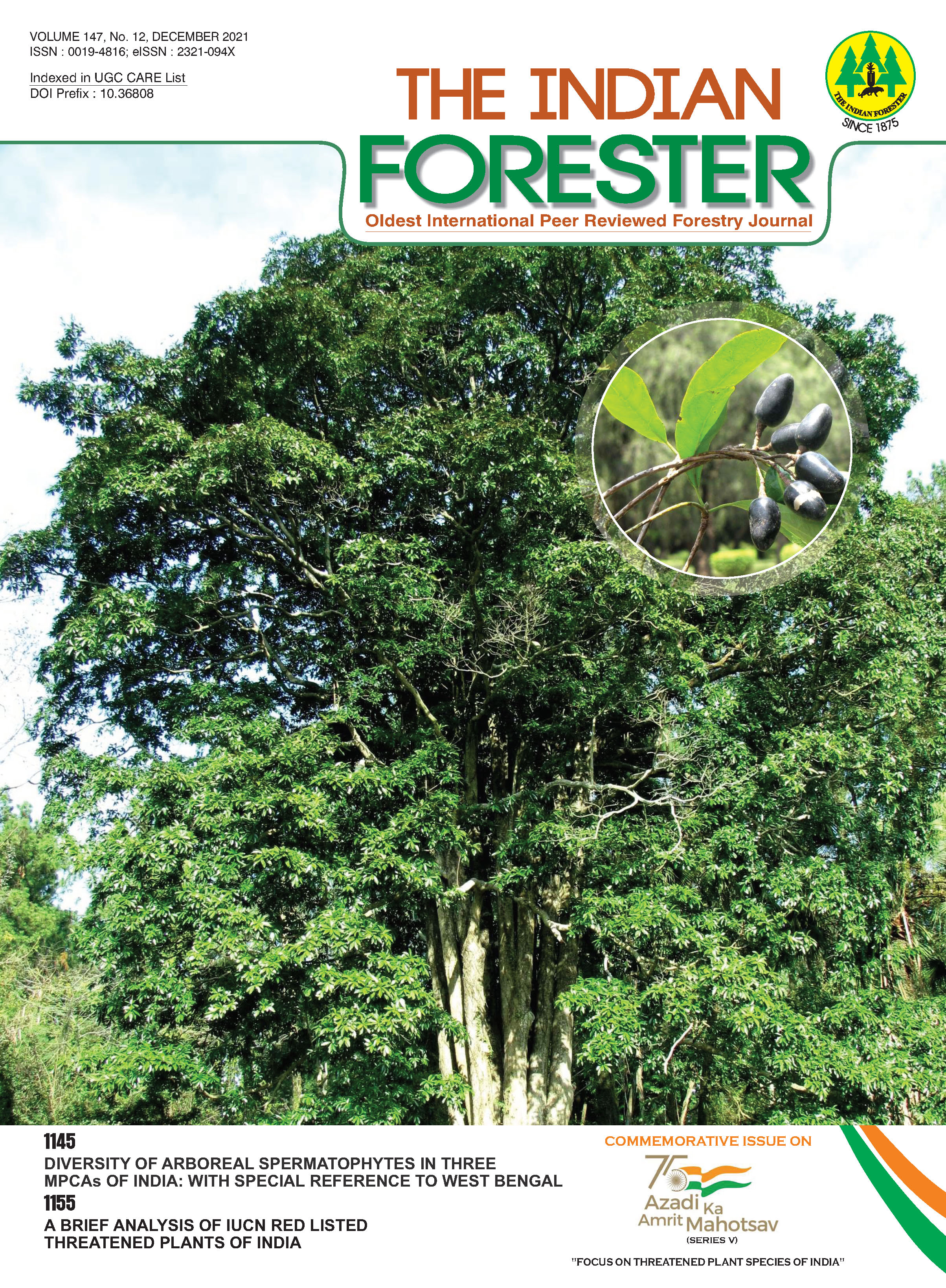A Brief Analysis of IUCN Red Listed Threatened Plants of India
DOI:
https://doi.org/10.36808/if/2021/v147i12/166613Keywords:
Biodiversity, Hotspots, Endemic, Endangered.Abstract
The newest assessment of Indian plant richness stands at 54733 taxa which include 21849 angiosperms, 15504 fungi, 8979 algae, 2791 bryophytes, 2961 lichens, 1257 microbes, 1310 pteridophytes and 82 gymnosperms. Of these, the IUCN Red List for Indian plants includes 416 angiosperms, 12 gymnosperms, 2 pteridophytes, 7 bryophytes and 1 fungal species under various threat categories. In current communication, the authors discuss various IUCN threat categories and analyse in brief the Red listed threatened plants of India.References
Akçakaya H.R. and Sjögren-Gulve P. (2000). Population viability analysis in conservation planning: an overview. Ecol. Bull., 48(1): 9–21.
Gärdenfors U., Hilton-Taylor C., Mace G. and RodrÃguez J.P. (2001). The application of IUCN Red List Criteria at regional levels. Conserv. Biol., 15(5): 1206-1212.
IUCN (2001). IUCN Red List Categories and Criteria: Version 3.1. IUCN Species Survival Commission. IUCN, Gland, Switzerland and Cambridge, United Kingdom
IUCN (2003). Guidelines for application of IUCN Red List Criteria at regional levels: Version 3.0. IUCN Species Survival Commission. Gland, Switzerland and Cambridge, United Kingdom
IUCN (2012). Guidelines for Application of IUCN Red List Criteria at Regional and National Levels: Version 4.0. Gland, Switzerland and Cambridge, United Kingdom.
IUCN (2020). The IUCN Red List of Threatened Species. Version 2020-2. https://www.iucnredlist.org. accessed on 31 July 2020.
Jain S.K. and Sastry A.R.K. (1980). Threatened Plants of India. A state-of-the-art report. BSI & MAB, New Delhi.
Jain S.K. and Sastry A.R.K. (ed). (1983). Materials for a catalogue of threatened plants of India. Botanical Survey of India, Howrah.
Jain S.K. and Sastry A.R.K. (1984). The Indian plant Red Data Book I. Botanical Survey of India, Calcutta. 27.
Kautmanova, I. (2019). Squamanita schreieri. The IUCN Red List of Threatened Species 2019: e.T70406908A70406916. https://dx.doi.org/10.2305/IUCN.UK.2019-2.RLTS. T70406908A70406916.en. accessed on 25 September, 2021.
Mao A.A., Dash S.S. and Kumar S. (eds). (2021). Plant Discoveries, 2020. Botanical Survey of India. Kolkata, WQest Bengal, India.
Marchese C. (2015). Biodiversity hotspots: A shortcut for a more complicated concept. Glob. Ecol, Conserv. 3(1): 297-309.
Nayar M.P. and Sastry A.R.K. (1987). Red Data Book of Indian Plants, Volume 1. Calcutta: Botanical Survey of India. 367 pp. 36.
Nayar M.P. and Sastry A.R.K. (1988). Red Data Book of Indian Plants, Volume 2. Calcutta: Botanical Survey of India. 150 pp. 37.
Nayar M.P. and Sastry A.R.K. (1990). Red Data Book of Indian Plants, Volume 3. Calcutta: Botanical Survey of India. 271 pp.
Reid W.V., Mooney H.A., Cropper A., Capistrano D., Carpenter S.R. and Chopra K. (2005). A report of the millennium ecosystem assessment. In: Ecosystems and Human. WellBeing. Washington, DC: Island Press, pp.186.
https://bsi.gov.in/page/en/threatend-texa Threatened plants of India (bsi.gov.in). accessed on 15 September, 2021.
Downloads
Downloads
Published
How to Cite
Issue
Section
License
Unless otherwise stated, copyright or similar rights in all materials presented on the site, including graphical images, are owned by Indian Forester.





